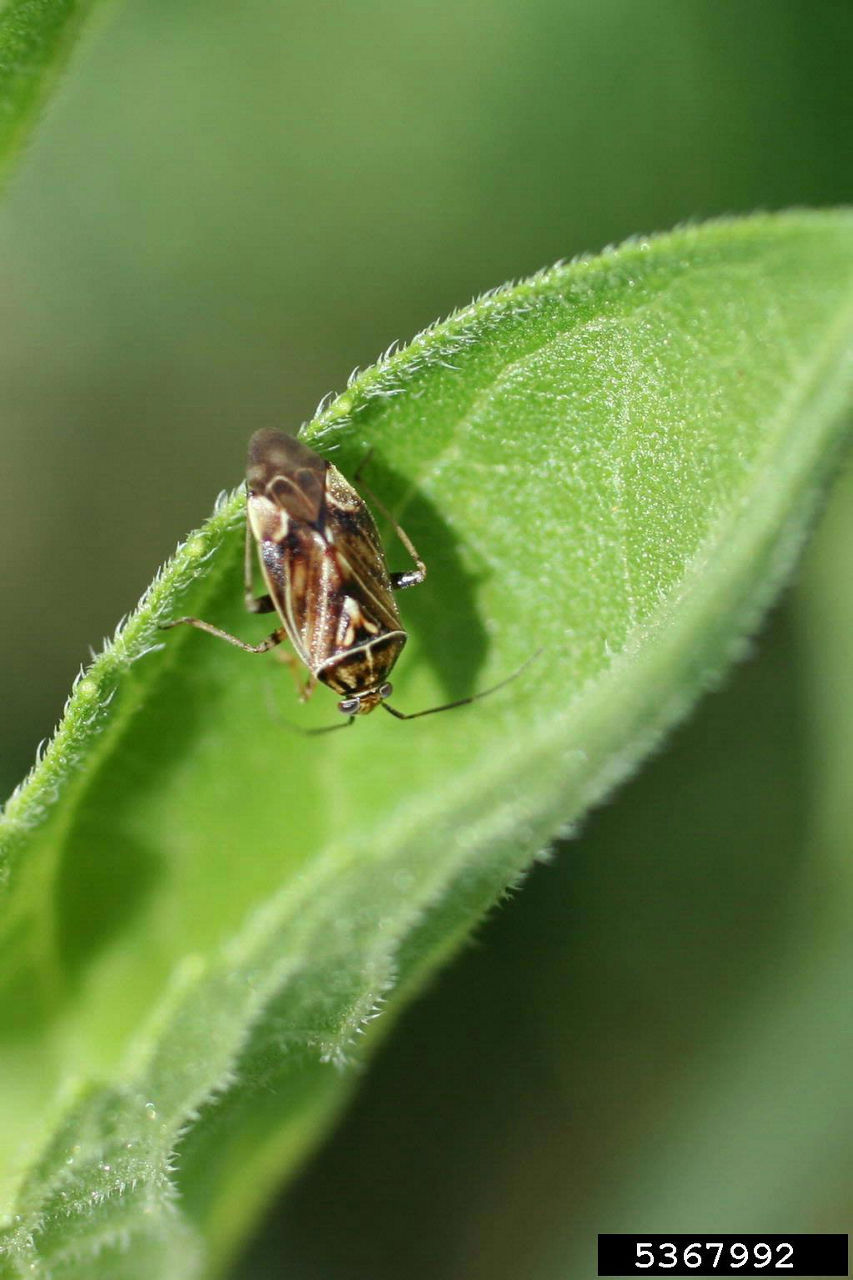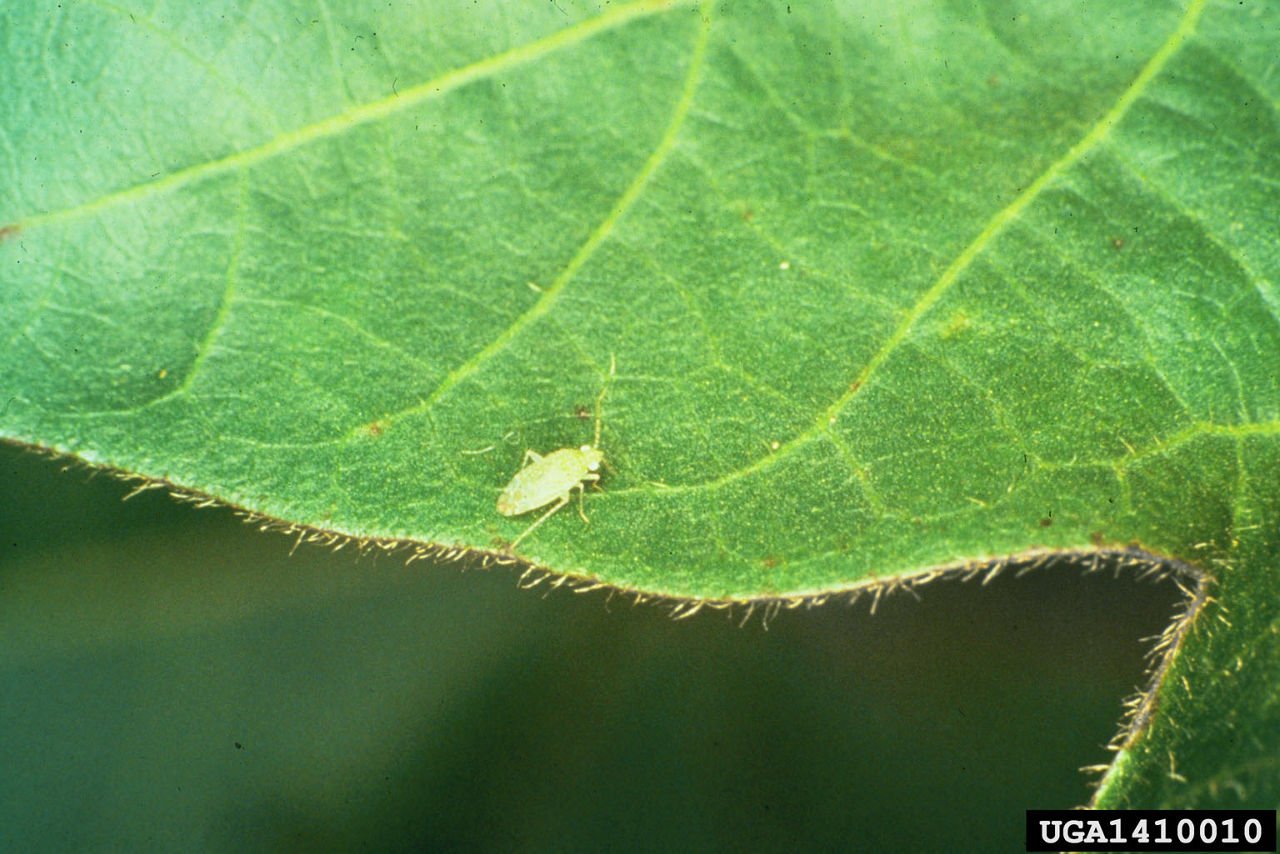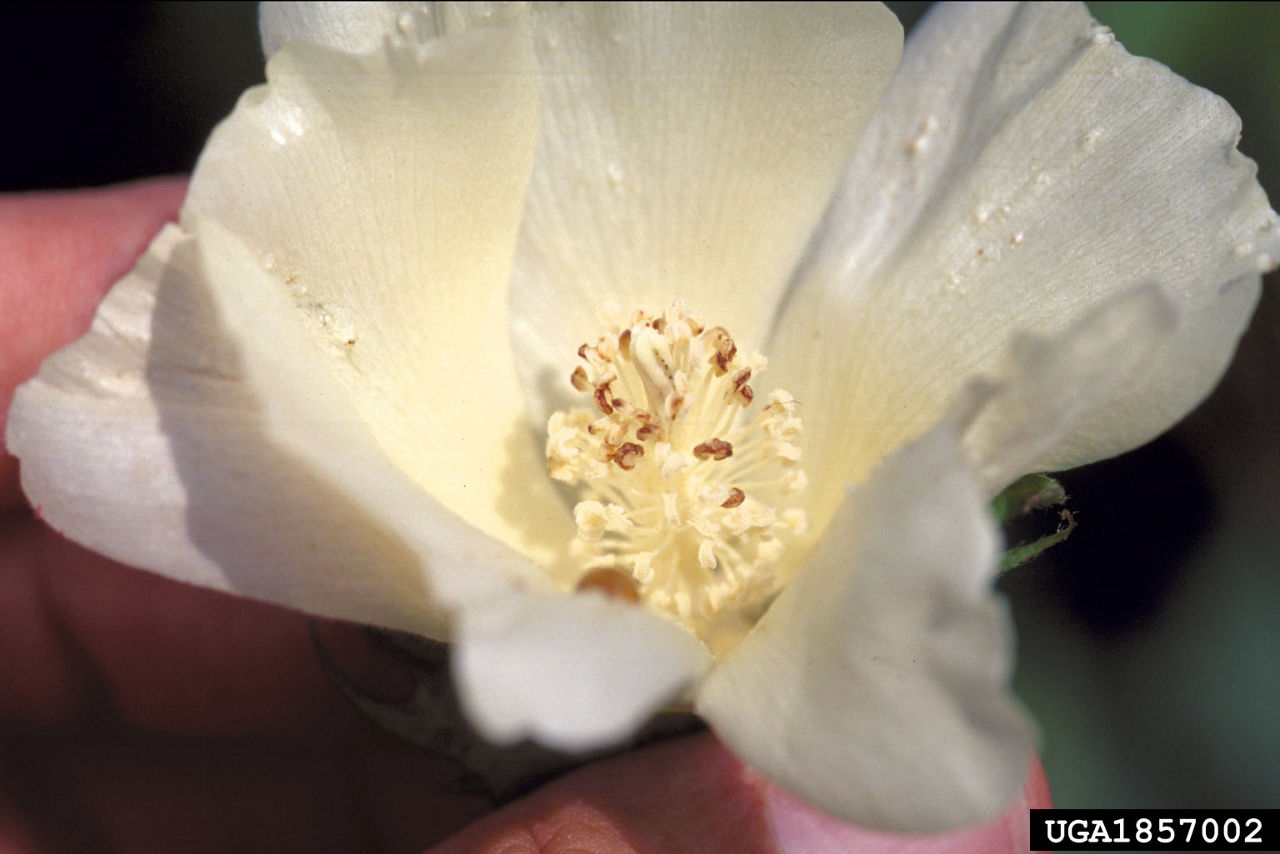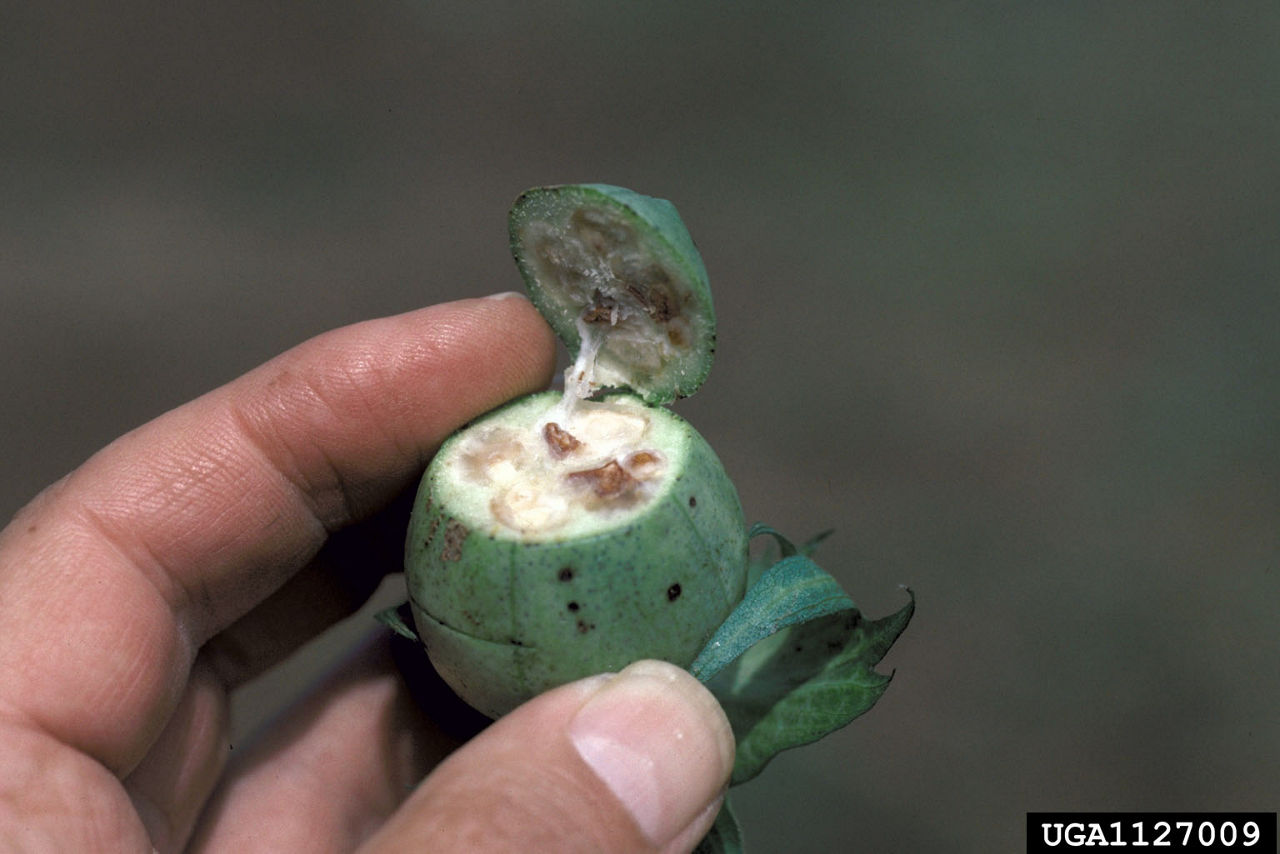Squaring Off with Plant Bugs
June 20, 2023
- Plant bugs are a familiar pest of the Midsouth and are becoming an increasing problem in the Southeast.
- Corn fields with silks turning brown can provide a large influx of plant bugs to neighboring cotton fields.
- Scouting should begin at the 5-leaf stage or pinhead square and should occur twice a week.
The impact of plant bug damage has increased over several years due to reductions in broad-spectrum insecticide applications. This is a result of the boll weevil eradication program, the use of selective insecticides that do not target plant bugs, and transgenic cotton production. This economic pest has historically been a problem in the Midsouth and more recently has become a regular pest in the Southeast.1 It is the most economically damaging insect in Mississippi cotton and, depending on the year, plant bug damage can cause 400 to 1,000 pounds of yield loss per acre.2 Managing plant bugs can be difficult with known tolerances to certain insecticides, but tools continue to be developed to help control these yield robbing pests. ThryvOn™ Technology is the industry’s first cotton biotechnology trait that provides protection through built in trait technology against key tarnished plant bugs and thrips species.*
*Scouting is critical to determine which and how many insecticide applications are recommended to avoid economic loss greater than pest management costs (i.e., when economic thresholds are met). Check with your local state extension university for the latest spraying recommendations.
Identification
Plant bugs are part of a larger group of insects referred to as “true bugs,” which includes stink bugs and several predatory species. True bugs have piercing, sucking mouthparts, and cotton-feeding plant bugs damage squares and young bolls. Plant bug pests of cotton include the tarnished plant bug (Lygus lineolaris), the western tarnished plant bug (L. Hesperus), the cotton fleahopper (Pseudatomoscelis seriatus), the clouded plant bug (Neurocolpus leucopterus), and the verde plant bug (Creontiades signatus).3,4

Tarnished plant bug. Adults are small, about ¼-inch (5 to 6 mm) long. They are brown with areas of white, yellow, reddish brown or black, and have a light colored “V” shape behind the head and two lighter areas on the wings (Figure 1). Immatures are yellow-green to dark green to brown.5 This species is more common in the Southeast and Midsouth. ThryvOn™ Technology offers protection against tarnished plant bug.

Clouded plant bug. Adults are 3/8-inch long, and are generally brown with areas of white, yellow, reddish brown or black. Their antennae have a noticeably thicker first segment. The hind legs of clouded plant bugs are larger than their other legs (Figure 2). Immatures are yellow-green to green with striped antennae.4
Western tarnished plant bug. Adults are about ¼-inch long, light green to brown, with markings that vary in color from reddish brown to black. Western tarnished plant bugs have a triangle shape on their flattened backs. Immatures are pale green with red-tipped antennae.6 This species is more common in the West. ThryvOn™ Technology offers protection against western tarnished plant bug.

Cotton fleahopper. Adults are 1/8-inch long, light green, oval shaped with long antennae (Figure 3). Immatures can have reddish eyes.7 Cotton fleahoppers are more commonly pests of Texas and Oklahoma, but periodically can be a problem in other cotton-growing areas.
Verde plant bug. Adults are ¼-inch long, light green with long antennae and red eyes. Immatures are neon green. Verde plant bugs are pests of South Texas that often migrate into cotton fields from harvested sorghum fields.8
Damage
Plant bug damage can begin during vegetative growth and continue through boll development. Feeding leads to delayed crop maturity and yield loss. Regular scouting is critical to minimize damage. See Table 1 for a quick overview of damage symptoms at different growth stages.
Terminals. Although not as common as square feeding, plant bug feeding on plant terminals can lead to substantial damage. Plant bugs inject toxins into plant parts to dissolve plant tissue before ingestion. When this process occurs in the meristematic tissue, terminals can be aborted, lateral branches may form without bearing fruit, internodes may shorten, and wounds on stems or petioles may form. The resulting cotton plant may be tall and spindly with minimal to no fruit. Cool and wet conditions may increase incidence of terminal feeding.

Small squares. Plant bug adults migrate to cotton fields and feed on pinhead squares, resulting in damaged squares turning yellow, drying down, and dropping from the plant several days later (Figure 4). Plants are most susceptible to injury during this time.9

Large squares. Damaged squares may have a brownish appearance, and damage becomes more apparent when blooms open with dark anthers and warty lesions on the petals. This is also referred to as a “dirty bloom” (Figure 5). Damage can lead to poor pollination and deformed bolls or square abortion in severe cases.

Bolls. Immature bolls are preferred by feeding plant bugs, and damage appears as small, dark, sunken spots on the outside of the boll. Cutting the boll open will reveal discolored lint near developing seeds (Figure 6). The inside of the outer wall may have warty bumps where the injury occurred. Extensive damage can lead to hard-locked bolls or boll abortion.9

Scouting
Scouting should begin at squaring and continue until the last harvestable bolls are formed. Scouting for plant bugs should occur twice a week and insecticides should be applied based on established thresholds. Regular and thorough scouting is critical for effective management of plant bugs in cotton.
Pre-bloom. Monitor square retention.5 Square retention lower than 80% should require additional monitoring through sampling. Take 25 sweeps at six to ten locations per field with a sweep net. Be mindful of surrounding fields as potential plant bug hosts. Higher plant bug counts on field borders may indicate active migration. Smaller fields can be more susceptible to damage as they contain a higher percentage of border area than larger fields.10
Bloom. Once cotton has been blooming for one to two weeks, scouting methods shift away from monitoring square retention to flower and fruit observations and using ground cloths. Black ground cloths (beat cloth, drop cloth, or shake sheet) are unrolled between two rows of cotton, and plants on both rows are leaned over the cloth and shaken vigorously. Plant bugs that land on the cloth should be counted quickly.10
Contact your Deltapine® brand representative, local Extension agent, or review your state’s Extension website for threshold recommendations for insecticide application.
Management
Integrated pest management is key for controlling plant bugs. There are over 500 known host plants of plant bugs and insecticide options may be limited, particularly in the Midsouth, due to resistance to multiple chemical classes over the past 10 to 20 years.2 Rotating chemistries and delaying the application of more aggressive insecticides until later in the season can help when pest pressure is higher. Beneficial insects like minute pirate bugs, damsel bugs, assassin bugs and big-eyed bugs can help provide control.11 Planting cotton earlier and separating cotton fields from corn and watermelon fields may help reduce plant bug damage.
Cotton with ThryvOn™ Technology has the industry’s first biotech trait that provides built-in protection against key tarnished plant bug species, and may help reduce the need for some insecticide applications.** Fewer insecticide applications can help protect beneficial insect populations and ease the complications that stem from managing insecticide application timing with weather conditions. ThryvOn Technology showed a 6.1% increase in square retention, compared to the check.*** Fields planted with ThryvOn™ Technology should continue to be scouted and insecticides should continue to be applied when thresholds are met.
**Scouting is critical to determine which and how many insecticide applications are recommended to avoid economic loss greater than pest management costs (i.e., when economic thresholds are met). Check with your local state extension university for the latest spraying recommendations.
***Scouting is critical to determine which and how many insecticide applications are recommended to avoid economic loss greater than pest management costs (i.e., when economic thresholds are met). Check with your local state extension university for the latest spraying recommendations. 30 2021 farmer managed Ground Breakers® Field Trials in the cotton belt (AL, AR, GA, MO, MS, NC, TN, TX) vs the check (i.e., cotton varieties not containing ThryvOn™ Technology) vs cotton varieties not containing ThryvOn™ Technology. 0.375mg ai/seed imidacloprid applied to the ThryvOn Technology seed.
Sources
1 Greene, J.K., Bundy, C.S., Roberts, P.M., and Leonard, B.R. 2006. Identification and management of common boll-feeding bugs in cotton. Cotton Incorporated. EB 158. https://www.cottoninc.com/wp-content/uploads/2015/12/Boll-Feeding-Cotton-Bugs-Mgmt.pdf
2 Coblentz, B.A. 2023. Plant bug battle lasts all season in cotton. Mississippi State University Extension. http://extension.msstate.edu/news/feature-story/2023/plant-bug-battle-lasts-all-season-cotton.
3 Plant bugs. Cotton Incorporated. https://www.cottoninc.com/cotton-production/ag-research/entomology/plant-bugs/.
4 Stewart, S.D. Cotton insects: Clouded plant bug. University of Tennessee Extension. W110. https://extension.tennessee.edu/publications/Pages/default.aspx.
5 Stewart, S.D. Cotton insects: Tarnished plant bug. University of Tennessee Extension. W025. https://extension.tennessee.edu/publications/Pages/default.aspx.
6 Barlow, V.M., Godfrey, L.D., Goodell. P.B., Haviland, D.R, and Natwick, E.T. 2015. Lygus bug (western tarnished plant bug). University of California Agriculture and Natural Resources. https://ipm.ucanr.edu/agriculture/cotton/lygus-bug-western-tarnished-plant-bug/#:~:text=Lygus%20bugs%20can%20threaten%20a,and%20drop%20from%20the%20plant.
7 Knutson, A. 2018. Cotton fleahopper. Texas A&M University. https://extensionentomology.tamu.edu/insects/cotton-fleahopper/.
8 Sekula, D. 2020. Texas LRGV: Verde plant bugs migrating from sorghum to cotton. AgFax. https://www.agfax.com/2020/06/12/texas-lrgv-verde-plant-bugs-migrating-from-sorghum-to-cotton/#:~:text=Verde%20plant%20bug%20adults%20are,very%20bright%20neon%20green%20color.
9 Freeman, B.L. 2011. Tarnished plant bugs in cotton. Alabama Cooperative Extension System. ANR-0180. https://www.aces.edu/.
10 Reisig, D. and Huseth, A. 2023. Tarnished plant bugs. NC State Extension. https://cotton.ces.ncsu.edu/insect-scouting-guide/tarnished-plant-bugs/#:~:text=Before%20cotton%20blooms%20tarnished%20plant,causing%20the%20squares%20to%20abort.
11 Reisig, D. 2021. Plant bug management in cotton. NC State Extension. https://cotton.ces.ncsu.edu/2021/06/plant-bug-management-in-cotton/.
1415_252251